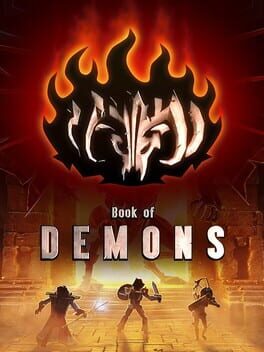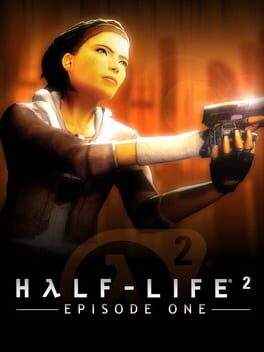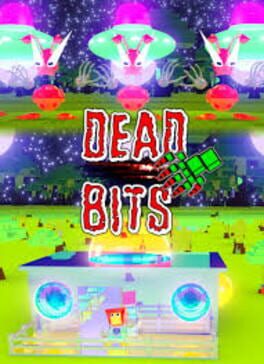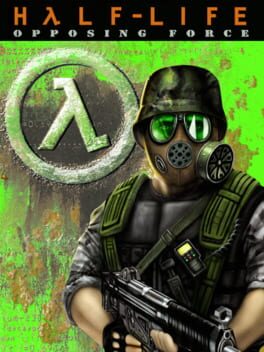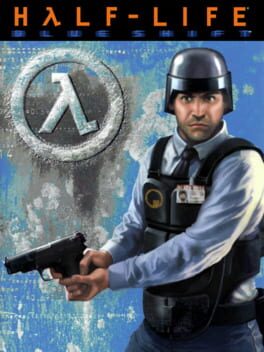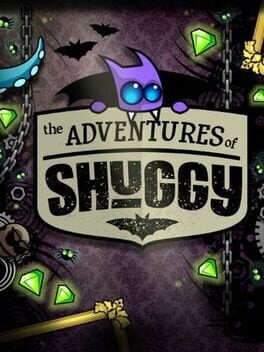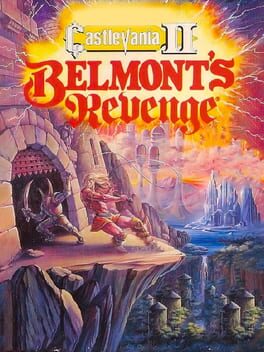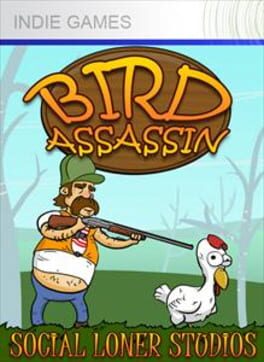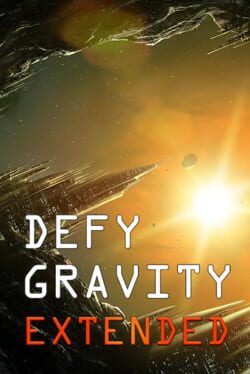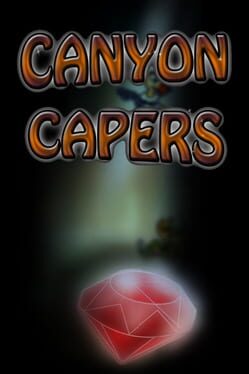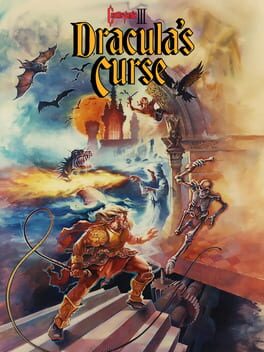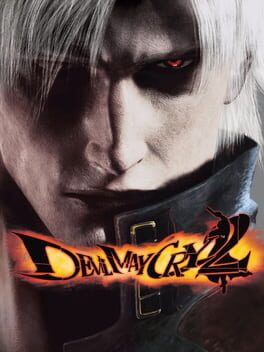Powerforce
BACKER
2018
This game was interesting.
Imagine Diablo 1 but with a clicker/hack 'n slash hybrid battle system, a card system which is the equivalent of skills, and a more limited area you can move in during the levels themselves.
In practice, I felt like it both worked and didn't.
As a big plus, this games has some nice QoL features - it notifies you if you missed something, meaning you can 100% a run down to the most little of things, deciding the pace of exploration and that way dividing the game into as big or bite sized of pieces as you want, and a quick exit from a level if you've collected everything, thus saving a bit of time.
The card system though, I wasn't the biggest fan of. It's random what sort of cards you'll get and I felt like having a regular RPG skill system with the possibility of branching paths would have worked better. Having to constantly go back up after finishing a level to identify a card just to end up with many extra copies that couldn't be used was annoying.
The enemy variety noticeably dries up around the half way point, making the game, even if you can still romp through it, a bit of a slog.
The last stretch of the game is also kinda weird. Levels become far smaller and more linear, enemies are numerous, and you can't escape and dodge them as much as before, making you also rely a lot more often on health potions. The sudden difficulty spikes becomes overwhelming, for lack of a better word.
An overall decent game with some interesting ideas and nice QoL features, but the lack of enemy variety in the second half and the card system brought it down in my eyes.
Imagine Diablo 1 but with a clicker/hack 'n slash hybrid battle system, a card system which is the equivalent of skills, and a more limited area you can move in during the levels themselves.
In practice, I felt like it both worked and didn't.
As a big plus, this games has some nice QoL features - it notifies you if you missed something, meaning you can 100% a run down to the most little of things, deciding the pace of exploration and that way dividing the game into as big or bite sized of pieces as you want, and a quick exit from a level if you've collected everything, thus saving a bit of time.
The card system though, I wasn't the biggest fan of. It's random what sort of cards you'll get and I felt like having a regular RPG skill system with the possibility of branching paths would have worked better. Having to constantly go back up after finishing a level to identify a card just to end up with many extra copies that couldn't be used was annoying.
The enemy variety noticeably dries up around the half way point, making the game, even if you can still romp through it, a bit of a slog.
The last stretch of the game is also kinda weird. Levels become far smaller and more linear, enemies are numerous, and you can't escape and dodge them as much as before, making you also rely a lot more often on health potions. The sudden difficulty spikes becomes overwhelming, for lack of a better word.
An overall decent game with some interesting ideas and nice QoL features, but the lack of enemy variety in the second half and the card system brought it down in my eyes.
Incredibly short and okay at best. The story ends at the moment where it seemed to start building up towards something interesting.
While the game is derivative in its design and played it incredibly safe by opting to not introduce anything new in terms of enemies or weapons, the atmosphere in places felt better than the base game. Having more environments where it was darker and you had to have the flashlight always on felt like a nice change, at least in my opinion.
You don't get the crowbar until you're pretty close to the end of the game, and combined with the limited ammo you get in most chapters, it was pretty noticeable the devs wanted you to over rely on the gravity gun.
While the game is derivative in its design and played it incredibly safe by opting to not introduce anything new in terms of enemies or weapons, the atmosphere in places felt better than the base game. Having more environments where it was darker and you had to have the flashlight always on felt like a nice change, at least in my opinion.
You don't get the crowbar until you're pretty close to the end of the game, and combined with the limited ammo you get in most chapters, it was pretty noticeable the devs wanted you to over rely on the gravity gun.
2004
Half-Life 2 is both different and familiar. It largely retains what made the first game special - the silent protagonist, the lack of cutscenes (with minor exceptions), the set pieces, the physics-based puzzles, and environmental storytelling.
The game's atmosphere and sound design isn't as "scary" (so to say) in comparison to the first game, but the Earth you find itself in is pretty dystopic and depressing. Seeing the whole game only through Gordon's eyes leaves a lot open to interpretation and while I'm normally not the biggest fan of such things, the antagonist of the story - The Combine, feels better left mysterious.
The level design has its ups and downs, but I felt like it was mostly pretty good.
One of the most atmospheric chapters (we don't go to Ravenholm) felt a little confusing to navigate at times, but was pretty fun overall.
The vehicle controls are janky and while those levels (Highway 17, Water Hazard, etc.) are amongst the longest in the game, they work well enough (most of the time) to be surprisingly pretty fun.
A low point of the levels were the fights with the Combine Gunships and Striders, but luckily, those encounters were only a few.
Luckily though, there were no Xen or On a Rail-like levels.
The physics based engine was admittedly pretty rudimentary, but Valve made the best of it through the puzzles.
The gunplay is sometimes said to be the weakest point of the game, but I didn't have too many problems with it.
Yeah, a lot of enemies don't give much of a reaction when hit and the sound of the weapons themselves feels uneven, while some other have a low ammo capacity. But that also encouraged me to try and switch weapons and use the entire arsenal far more often.
Overall, it has its flaws, but I came out of this game pretty satisfied with how it turned out.
The game's atmosphere and sound design isn't as "scary" (so to say) in comparison to the first game, but the Earth you find itself in is pretty dystopic and depressing. Seeing the whole game only through Gordon's eyes leaves a lot open to interpretation and while I'm normally not the biggest fan of such things, the antagonist of the story - The Combine, feels better left mysterious.
The level design has its ups and downs, but I felt like it was mostly pretty good.
One of the most atmospheric chapters (we don't go to Ravenholm) felt a little confusing to navigate at times, but was pretty fun overall.
The vehicle controls are janky and while those levels (Highway 17, Water Hazard, etc.) are amongst the longest in the game, they work well enough (most of the time) to be surprisingly pretty fun.
A low point of the levels were the fights with the Combine Gunships and Striders, but luckily, those encounters were only a few.
Luckily though, there were no Xen or On a Rail-like levels.
The physics based engine was admittedly pretty rudimentary, but Valve made the best of it through the puzzles.
The gunplay is sometimes said to be the weakest point of the game, but I didn't have too many problems with it.
Yeah, a lot of enemies don't give much of a reaction when hit and the sound of the weapons themselves feels uneven, while some other have a low ammo capacity. But that also encouraged me to try and switch weapons and use the entire arsenal far more often.
Overall, it has its flaws, but I came out of this game pretty satisfied with how it turned out.
2014
Over the past 2 weeks, I've gone through my steam library and realized I have a lot of games I didn't know I owned in the first place. Out of 20, I've only beaten 3 of them when you include this one. And I didn't enjoy it, but more on that in a bit. (no pun intended)
Dead Bits is a shooter with graphics that look like a mix of Minecraft and Roblox, for lack of a better comparison.
During the first 5 stages, the game is more on the boring side. The dubstep music and the game slowing down during certain kills makes this a weird time-capsule of what was popular on YouTube gaming videos during that time. Admittedly, it appealed to me once, but at this point, it was like an embarrassing memory I'd rather forget.
Each stage gets slightly harder, with a noticeable difficulty spikes occuring in stage 6. Levels also become tighter with smaller spaces to maneuver, while the number of enemies increase.
This, combined with the fact stage 6 introduces things that can insta kill you makes it incredibly annoying to play. The worst offender is stage 9, which is an annoying obstacle course with too many instances of things that can insta kill you.
So why did I beat it? It's one of those games where I got so annoyed I had to finish it, regardless of how I felt.
Luckily, it only took just a little over 2 hours, so it wasn't the biggest waste of time ever.
Dead Bits is a shooter with graphics that look like a mix of Minecraft and Roblox, for lack of a better comparison.
During the first 5 stages, the game is more on the boring side. The dubstep music and the game slowing down during certain kills makes this a weird time-capsule of what was popular on YouTube gaming videos during that time. Admittedly, it appealed to me once, but at this point, it was like an embarrassing memory I'd rather forget.
Each stage gets slightly harder, with a noticeable difficulty spikes occuring in stage 6. Levels also become tighter with smaller spaces to maneuver, while the number of enemies increase.
This, combined with the fact stage 6 introduces things that can insta kill you makes it incredibly annoying to play. The worst offender is stage 9, which is an annoying obstacle course with too many instances of things that can insta kill you.
So why did I beat it? It's one of those games where I got so annoyed I had to finish it, regardless of how I felt.
Luckily, it only took just a little over 2 hours, so it wasn't the biggest waste of time ever.
Even if very slightly, I'd say I liked this expansion more than the base game.
Some lessons were learned, and the overall pacing of the game felt far better. Admittedly, there is a bad final boss and also this expansion's equivalent of Blast Pit, but there were no levels which felt as annoying as On A Rail or the Xen ones.
The expansion leaning more into the shooter aspect, adding more weapons and enemies, while removing a lot of puzzles in comparison to the base game and Blue Shift is also worth mentioning, and I was a big fan of that.
The story and atmosphere didn't quite feel as gripping than the original, but were well-done, and it was nice to experience this story from another point of view.
Some lessons were learned, and the overall pacing of the game felt far better. Admittedly, there is a bad final boss and also this expansion's equivalent of Blast Pit, but there were no levels which felt as annoying as On A Rail or the Xen ones.
The expansion leaning more into the shooter aspect, adding more weapons and enemies, while removing a lot of puzzles in comparison to the base game and Blue Shift is also worth mentioning, and I was a big fan of that.
The story and atmosphere didn't quite feel as gripping than the original, but were well-done, and it was nice to experience this story from another point of view.
A decent, albeit playing it incredibly safe, expansion to the original game.
There was a slightly bigger emphasis on puzzles and escorting people. Combined with the addition of a lot more ammo and health packs laying around, this felt far easier than the original, especially in the second half.
Despite a lack of enemy variety, it's only around 4 hours long, so it doesn't overstay its welcome too much.
There was a slightly bigger emphasis on puzzles and escorting people. Combined with the addition of a lot more ammo and health packs laying around, this felt far easier than the original, especially in the second half.
Despite a lack of enemy variety, it's only around 4 hours long, so it doesn't overstay its welcome too much.
Decent puzzle-platformer with a good presentation and nice amount of level variety. Whether it's rotating the map, controlling multiple versions of yourself, or carefully planning your route, because a version of yourself that can kill you spawns and takes that exact same route; it has some interesting ideas, though nothing groundbreaking.
The difficulty of each room can greatly vary. Some of them in particular felt pretty gimmicky and hard, so I enjoyed it more when playing in shorter sessions.
The difficulty of each room can greatly vary. Some of them in particular felt pretty gimmicky and hard, so I enjoyed it more when playing in shorter sessions.
I was surprised by this game, since I thought the Game Boy's limitations will once again result in a rather mediocre experience like the first game. Luckily, that wasn't the case.
This one took the rather underwhelming experience of Castlevania: The Adventure and improved on it.
Presentation, naturally due to the system, is still minimalistic, but with the inclusion of a story felt a bit better.
The slow speed and frame rate issues present in the first game are not here, which makes this one more fun to play. The addition of sub-weapons is also worth noting, even if there are only two of them.
Level design isn't mind-blowing, but does the job well and most levels (and the game in general) were pretty short, so there wasn't much to complain about there.
Overall, while not outstanding, this is a good Castlevania game.
This one took the rather underwhelming experience of Castlevania: The Adventure and improved on it.
Presentation, naturally due to the system, is still minimalistic, but with the inclusion of a story felt a bit better.
The slow speed and frame rate issues present in the first game are not here, which makes this one more fun to play. The addition of sub-weapons is also worth noting, even if there are only two of them.
Level design isn't mind-blowing, but does the job well and most levels (and the game in general) were pretty short, so there wasn't much to complain about there.
Overall, while not outstanding, this is a good Castlevania game.
There's a good game in here, but it felt like the Game Boy wasn't a good choice for this sort of thing.
I can appreciate the ambition, and the first three levels felt fine, but there's some pretty noticeable frame rate issues, which brings down the enjoyment you get. Platforming becomes more tedious, the combat in slow motion doesn't feel good, and the incredibly minimalistic presentation removes a big part of what makes the retro Castlevania games so special.
And there's stage 4. It felt a bit too long and accentuated another problem with the game, which was its poorly placed checkpoints.
Had it been designed for another system, this could've been quite good.
In its current state, it's something that can be safely skipped.
I can appreciate the ambition, and the first three levels felt fine, but there's some pretty noticeable frame rate issues, which brings down the enjoyment you get. Platforming becomes more tedious, the combat in slow motion doesn't feel good, and the incredibly minimalistic presentation removes a big part of what makes the retro Castlevania games so special.
And there's stage 4. It felt a bit too long and accentuated another problem with the game, which was its poorly placed checkpoints.
Had it been designed for another system, this could've been quite good.
In its current state, it's something that can be safely skipped.
2011
A simplistic 2D shooter about a person whose dad was killed by birds and now he wants to get revenge on them. Yes, it's a weird plot.
At its core, the game is pretty goofy, easy and involves going through a level, avoiding some obstacles and mowing down all birds that comes in your way.
The only minor complaint I have is that the final boss has a really small hitbox. It's a 30 second boss battle when you're fully upgraded so it didn't really matter, but it was noticeable.
It took me just under an hour to finish and I went out of my way to grind a bit so I can get all weapons and upgrades.
Does it have replay value? Not really, but it was fun for the hour it lasted.
At its core, the game is pretty goofy, easy and involves going through a level, avoiding some obstacles and mowing down all birds that comes in your way.
The only minor complaint I have is that the final boss has a really small hitbox. It's a 30 second boss battle when you're fully upgraded so it didn't really matter, but it was noticeable.
It took me just under an hour to finish and I went out of my way to grind a bit so I can get all weapons and upgrades.
Does it have replay value? Not really, but it was fun for the hour it lasted.
An interesting concept for a puzzle-platformer game, where you have to go from point A to point B by creating gravitational attraction and propulsion areas.
The presentation is incredibly minimalistic, with incredibly basic graphics, not many animations, and what is pretty much a one sentence story. It felt a bit like a flash game at times due to that.
The first half is relatively easy, while the second half explicitly warns you it's much harder.
Checkpoints were placed rather well, allowing for multiple attempts of trying different things without losing much progress, but it was noticeable that the levels became much longer in the second half. This normally wouldn't be an issue, but if you decide to exit the game, you'll be sent back to the beginning of that level, rather than the last checkpoint, which was a shame. Not to mention there's no level select. The most annoying part however were the rather stiff controls.
Overall, it's an interesting idea which with improved controls and more work put into its presentation could've been a great game.
In its current state, it's one of those "it was ok, but could be much more" type of games.
The presentation is incredibly minimalistic, with incredibly basic graphics, not many animations, and what is pretty much a one sentence story. It felt a bit like a flash game at times due to that.
The first half is relatively easy, while the second half explicitly warns you it's much harder.
Checkpoints were placed rather well, allowing for multiple attempts of trying different things without losing much progress, but it was noticeable that the levels became much longer in the second half. This normally wouldn't be an issue, but if you decide to exit the game, you'll be sent back to the beginning of that level, rather than the last checkpoint, which was a shame. Not to mention there's no level select. The most annoying part however were the rather stiff controls.
Overall, it's an interesting idea which with improved controls and more work put into its presentation could've been a great game.
In its current state, it's one of those "it was ok, but could be much more" type of games.
2014
The platforming itself feels sloppy and the controls don't help either.
Enemies respawn way too fast, there was nothing in the level design which was remotely interesting (far too much repetition), and the difficulty spikes felt way too sudden.
In nearly all levels, you'll have to collect specific objects within a certain time limit, but the game doesn't allow you to make many mistakes and oftentimes, you'll have to replay a level a few times, not mess up, and choose the optimal path every time. It becomes frustrating, and neither is there much satisfaction in beating a level either.
Enemies respawn way too fast, there was nothing in the level design which was remotely interesting (far too much repetition), and the difficulty spikes felt way too sudden.
In nearly all levels, you'll have to collect specific objects within a certain time limit, but the game doesn't allow you to make many mistakes and oftentimes, you'll have to replay a level a few times, not mess up, and choose the optimal path every time. It becomes frustrating, and neither is there much satisfaction in beating a level either.
I had shelved this game for a while and did not realize how close I was to Dracula, so beating it after just 2 stages came as a bit of a surprise.
It's definitely the hardest out of the original trilogy, with some annoying parts like what felt like an increase of fighting on stairs and an incredibly poorly placed checkpoint on the Dracula boss battle. If you're playing on original hardware, good luck with the second one especially.
Still, there are branching paths and multiple characters to recruit, increasing the replay value and adding depth, while still retaining that Castlevania 1 formula.
There is quite a bit of room for experimentation and coming up with different strategies on the fly is a must.
The improved graphics and soundtrack were also pretty good.
Overall, I'd say this game falls into the category of games I appreciate more than I like. It's by no means a bad game. I had fun with it in quite a few places, I get the reasoning behind most of the design decisions and how important it is to gaming history, but it's not exactly my type of game.
It's definitely the hardest out of the original trilogy, with some annoying parts like what felt like an increase of fighting on stairs and an incredibly poorly placed checkpoint on the Dracula boss battle. If you're playing on original hardware, good luck with the second one especially.
Still, there are branching paths and multiple characters to recruit, increasing the replay value and adding depth, while still retaining that Castlevania 1 formula.
There is quite a bit of room for experimentation and coming up with different strategies on the fly is a must.
The improved graphics and soundtrack were also pretty good.
Overall, I'd say this game falls into the category of games I appreciate more than I like. It's by no means a bad game. I had fun with it in quite a few places, I get the reasoning behind most of the design decisions and how important it is to gaming history, but it's not exactly my type of game.
2011
An overall pretty enjoyable game, which expands on the cryptic story the original Portal had and adds a bunch of new mechanics to keep things fresh during its runtime.
The first few chapters were a breeze, especially if you played the first game beforehand. The new mechanics introduced later can take some getting used to, but were for the most part pretty fun. However, the difficulty progression felt a bit uneven, as sometimes what felt like more difficult levels were placed before easier and more intuitive ones.
The feeling of mystery the first game had obviously couldn't be repeated, but the story works well and has some nice twists which left me surprised. Wheatley and GLaDOS were the highlights and I really enjoyed both their characters.
Personally, I felt like the game somewhat dragged on in chapters 7 and 8, but picked up to deliver a pretty good ending in chapter 9.
The first few chapters were a breeze, especially if you played the first game beforehand. The new mechanics introduced later can take some getting used to, but were for the most part pretty fun. However, the difficulty progression felt a bit uneven, as sometimes what felt like more difficult levels were placed before easier and more intuitive ones.
The feeling of mystery the first game had obviously couldn't be repeated, but the story works well and has some nice twists which left me surprised. Wheatley and GLaDOS were the highlights and I really enjoyed both their characters.
Personally, I felt like the game somewhat dragged on in chapters 7 and 8, but picked up to deliver a pretty good ending in chapter 9.
2003
Out of morbid curiosity, I gave this game a try, and it pretty much deserves all the flack it gets.
The story is bland and there was nothing that stood out at all.
The atmosphere is a severe downgrade from the first game and the overall style feels soulless and boring.
The AI is poorly designed and boring to fight against. There is also a severe over reliance on devil trigger and skipping fights almost feels encouraged with how sloppy the combat feels. Not to mention the style meter disappears if you don't do damage for 2 seconds.
The game's levels are far too big and shrinking them to be thrice to five times as smaller wouldn't have resulted in much being lost.
There are some small positives, though.
The inclusion of a dodge button, which would be expanded to the trickster style in the 3rd game, was nice.
The game includes multiple playable characters.
There is quick weapon switching for guns.
The amulet mechanic, which allows customization of your Devil Trigger was neat.
The orb design is bad, but in hilarious way. That first red orb face you see sets up the tone for the game perfectly.
And the voice acting, despite Dante feeling like he knows he's in DMC2 is so cheesy it's loveable.
The story is bland and there was nothing that stood out at all.
The atmosphere is a severe downgrade from the first game and the overall style feels soulless and boring.
The AI is poorly designed and boring to fight against. There is also a severe over reliance on devil trigger and skipping fights almost feels encouraged with how sloppy the combat feels. Not to mention the style meter disappears if you don't do damage for 2 seconds.
The game's levels are far too big and shrinking them to be thrice to five times as smaller wouldn't have resulted in much being lost.
There are some small positives, though.
The inclusion of a dodge button, which would be expanded to the trickster style in the 3rd game, was nice.
The game includes multiple playable characters.
There is quick weapon switching for guns.
The amulet mechanic, which allows customization of your Devil Trigger was neat.
The orb design is bad, but in hilarious way. That first red orb face you see sets up the tone for the game perfectly.
And the voice acting, despite Dante feeling like he knows he's in DMC2 is so cheesy it's loveable.
